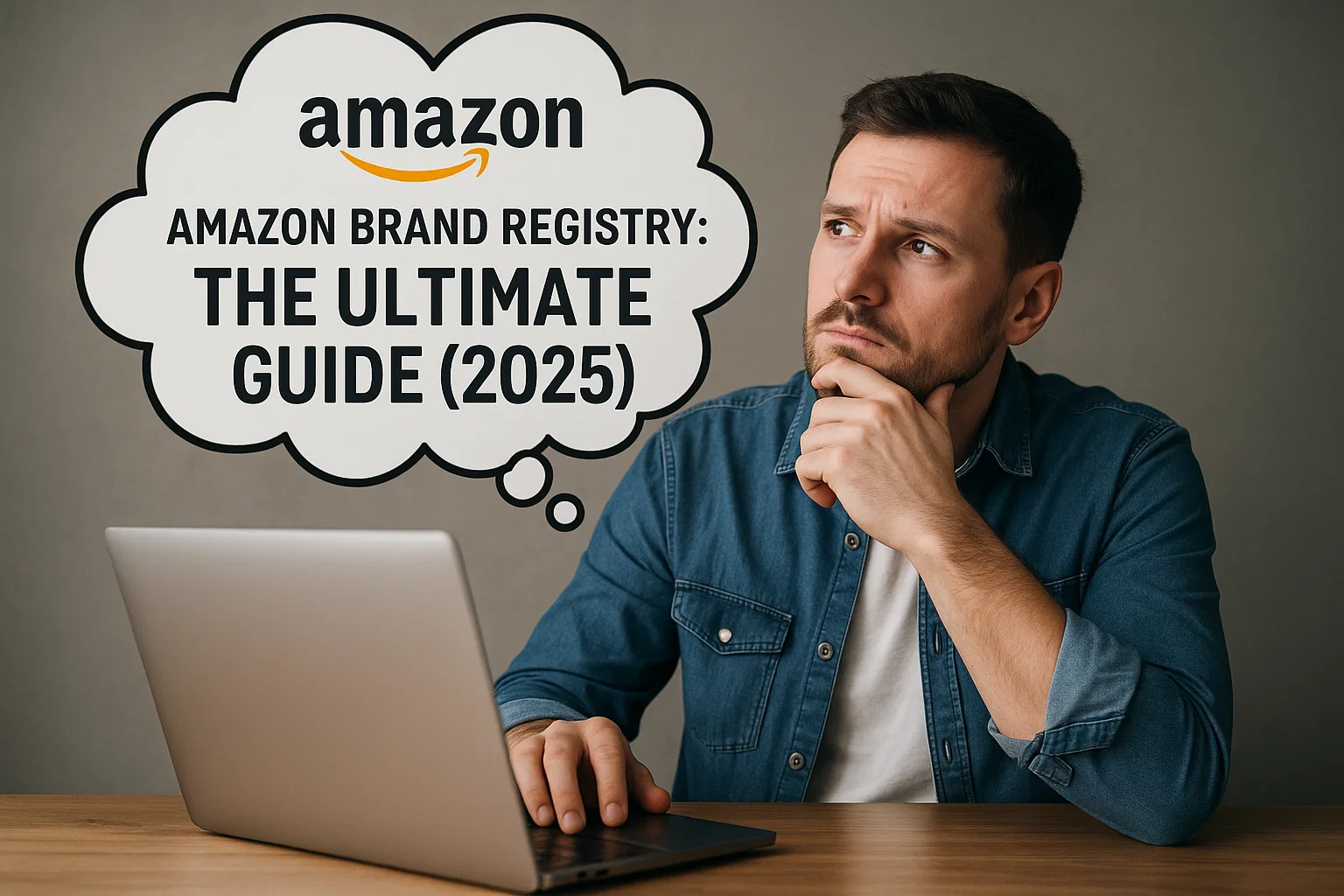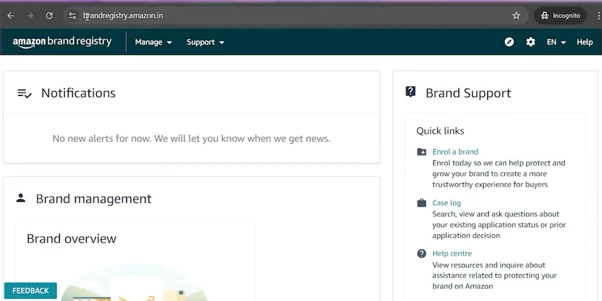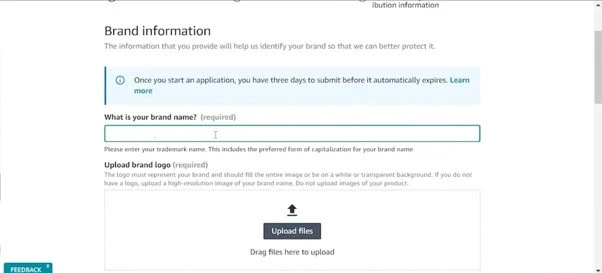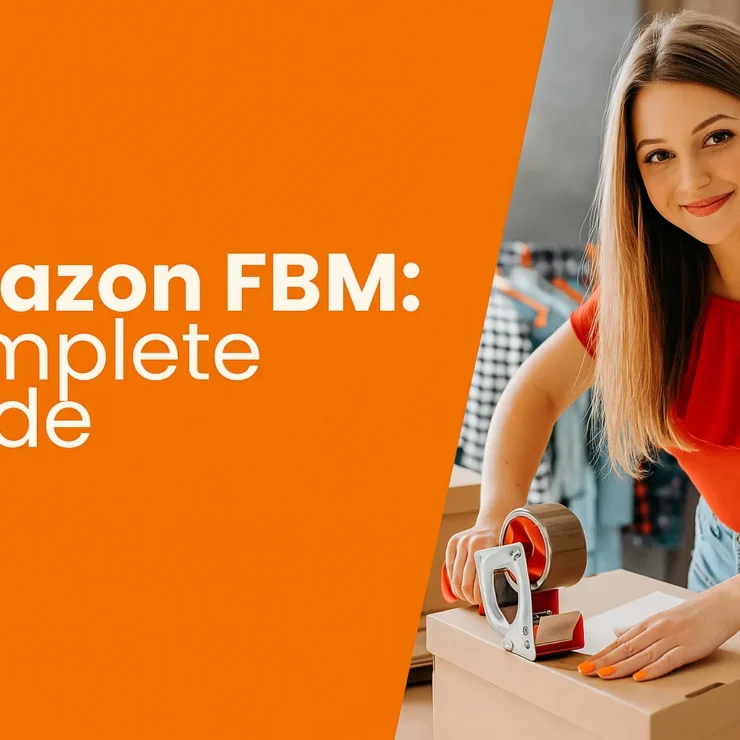If you’re a brand owner selling on Amazon, protecting your intellectual property and standing out in a competitive marketplace is more important than ever. That’s where Amazon Brand Registry comes in — a powerful program designed to give brand owners greater control over their listings, brand representation, and intellectual property enforcement.
With millions of third-party sellers and daily product uploads, unauthorized use of trademarks, incorrect product listings, and counterfeit issues have become real concerns for sellers. Amazon recognized this and developed the Brand Registry to empower legitimate brand owners with advanced tools to protect their brand and improve customer trust.
Whether you’re an established business or just starting your eCommerce journey, enrolling in Amazon Brand Registry can make a significant difference. From reporting violations faster to controlling product detail pages, and even accessing enhanced marketing tools, the registry unlocks critical features that standard seller accounts can’t access.
In this detailed guide, we’ll walk you through what Amazon Brand Registry is, why it matters, who is eligible, how to register, and how to make the most of it once you’re enrolled. So if you’ve ever wondered how to register your brand on Amazon, or you’ve been hearing about Brand Registry but aren’t sure how it benefits your business — this guide is for you.
What is Amazon Brand Registry?
If you’re a brand owner selling on Amazon, Amazon Brand Registry is one of the most powerful tools you can leverage. It’s a program designed to help protect your registered trademarks and enhance your brand’s presence on the Amazon marketplace. By enrolling in Amazon Brand Registry, sellers gain access to enhanced tools that not only improve brand protection but also offer deeper insights into customer behavior, counterfeit detection, and listing control.
Brand Registry connects directly to the U.S. Patent and Trademark Office and other global trademark authorities to verify your brand ownership. Once enrolled, you’ll receive greater authority over your product listings and brand content, ensuring that your product details, images, and messaging remain consistent across the platform.
Once you’re enrolled in Brand Registry, you’ll gain access to enhanced A+ Content tools—making your listings more compelling. Learn how to fully optimize your product listings in our Amazon Listing Optimization guide.
Benefits of Amazon Brand Registry
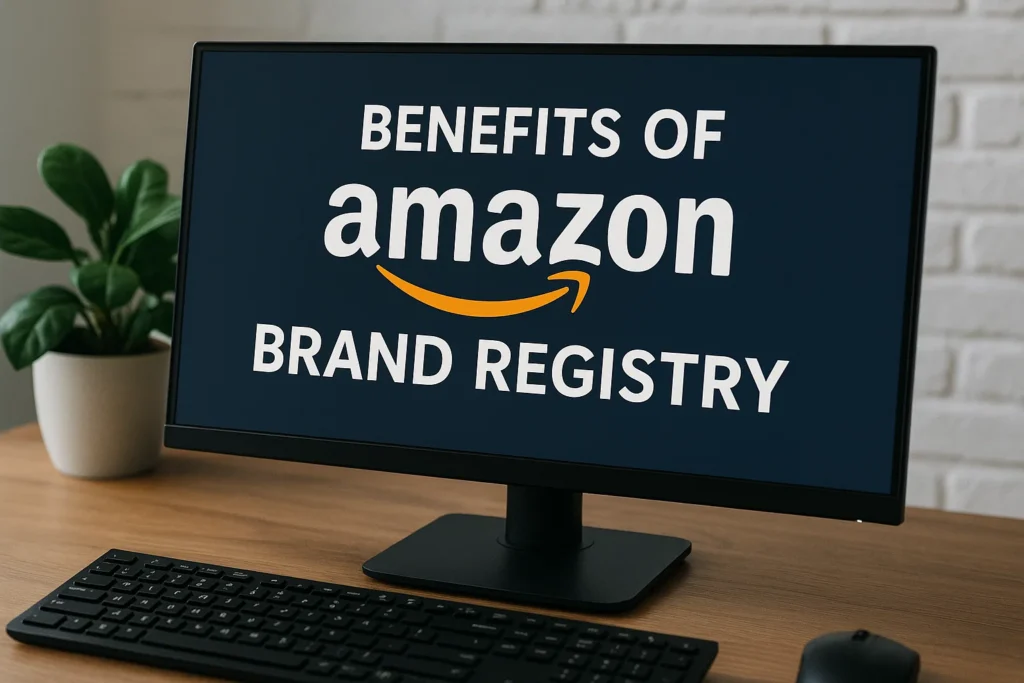
Enrolling in the Amazon Brand Registry offers a range of powerful tools and protections that give brand owners greater control over their products, listings, and intellectual property. Whether you’re a private label seller or a manufacturer, the Brand Registry is designed to enhance your ability to grow and safeguard your business on Amazon. Below are the key benefits:
Greater Control Over Product Listings
Once your brand is registered, you gain authoritative control over your product listings. This includes the title, product description, bullet points, and images. If unauthorized sellers attempt to alter or hijack your content, Amazon will prioritize your version as the brand owner. This reduces listing errors, maintains consistency across your catalog, and ensures customers receive accurate product information.
Brand Protection Against Counterfeiters
One of the core reasons sellers join Brand Registry is to protect against counterfeit or unauthorized sales. Amazon uses a combination of machine learning, data science, and human reviewers to detect and prevent the sale of counterfeit products. With tools like Transparency and Project Zero (available to select brands), you can proactively remove infringing listings before they impact your brand.
Powerful Reporting and Search Tools
Brand Registry provides access to tools that help you proactively monitor and report IP infringements. The Report a Violation (RAV) tool allows you to search using product images, ASINs, and keywords, then quickly take action against violators. You can also generate reports on suspect listings and monitor seller behavior across marketplaces.
Enhanced Brand Content (A+ Content)
With Brand Registry, you can create A+ Content (formerly Enhanced Brand Content), which allows you to add rich images, charts, and detailed product narratives to your listings. A+ Content not only improves your brand’s visual appeal but also enhances conversion rates by giving customers a deeper understanding of your products.
Access to Amazon Stores and Brand Analytics
Registered brands can create their own multipage Amazon Storefront, showcasing their full product range with a custom design. You also gain access to Brand Analytics, which provides valuable insights such as customer search terms, market basket data, item comparison stats, and demographic reports. These insights help you make data-driven marketing and product decisions.
Early Reviewer and Vine Programs
Through Brand Registry, you may become eligible for programs like Amazon Vine, which allows you to receive trusted reviews from Amazon’s top reviewers. These reviews help build trust and improve conversion rates on new product listings.
Global Brand Protection
For brands selling internationally, Brand Registry helps ensure protection across multiple Amazon marketplaces. If you’re enrolled in one region, you can often extend protections and tools across other supported countries with minimal extra effort.
Registering your brand is only the first step. To succeed on Amazon, you also need to choose the right products. Don’t miss our detailed Amazon Product Research guide for 2025 to uncover high-potential items.
Amazon Brand Registry Requirements
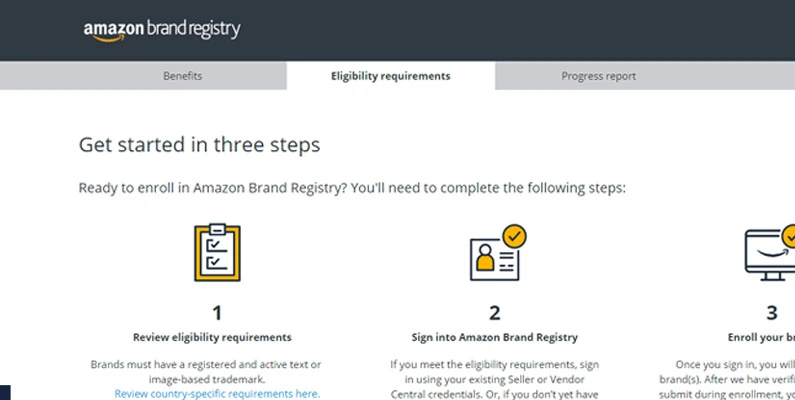
To enroll in the Amazon Brand Registry program, you need to meet specific eligibility criteria set by Amazon. These requirements are designed to ensure that only legitimate brand owners gain access to the platform’s enhanced protection and marketing tools. Below are the essential Amazon Brand Registry requirements you must fulfill before starting the enrollment process:
Registered Trademark
The most critical requirement is owning an active registered trademark in each country where you want to enroll. Amazon only accepts trademarks that are:
- Trademark must be a text-based mark (word mark) or an image-based mark with words, letters, or numbers (design mark)
- Issued by approved government trademark offices, such as:
- United States Patent and Trademark Office (USPTO)
- UK Intellectual Property Office (UKIPO)
- European Union Intellectual Property Office (EUIPO)
And others supported by Amazon (Canada, India, Japan, etc.)
How Can I Register a Trademark?
Securing a trademark involves a few key steps to protect your brand name, logo, or slogan legally. Here’s how to get started:
- Conduct a Trademark Search
Before you file, it’s critical to ensure your desired name or logo isn’t already registered by someone else. Use the USPTO’s Trademark Electronic Search System (TESS) to check for existing trademarks that might conflict with yours. Be thorough—conflicts can delay or derail your application. - Choose the Correct Trademark Class
When applying, you’ll need to specify a “class” that best fits your product or service. Trademark classes are categories (there are 45 in total) used by the USPTO to organize different types of goods and services. Think of it like choosing the right department for your product on a site like Amazon. Filing under the wrong class could lead to rejection or limit your brand protection. - Decide Whether to Use an Attorney
While you can submit a trademark application on your own, many applicants choose to hire a licensed trademark attorney to handle the legal paperwork and avoid costly mistakes. Attorneys can help with proper classification, address any legal objections, and improve your chances of approval. You can find trademark lawyers both locally and online.
How long does it take to get a trademark registered?
Usually, it takes around a year to hear back from the USPTO regarding your trademark application.
However, if you’re an Amazon seller, you don’t have to wait that long to start protecting your brand.
Amazon provides a program called IP Accelerator, which connects sellers with trusted Intellectual Property attorneys who specialize in trademarks.
By using one of Amazon’s approved legal partners, you can gain early access to Amazon Brand Registry even before your trademark is officially registered.
After protecting your brand, it’s time to focus on profitability. Our list of the 10 best Amazon repricer tools can help you stay competitive without sacrificing your margins.
Matching Brand Name
The brand name on your products and packaging must exactly match the name registered in your trademark. Consistency is essential across your:
- Product listings
- Packaging
- Website (if applicable)
Amazon may request product photos showing your brand name to verify authenticity.
Amazon Account Requirements
You must have an active Amazon Seller Central or Vendor Central account in good standing to initiate the Brand Registry process. New sellers can sign up and complete verification before applying.
Government-Registered Trademark Number
You’ll need to provide the trademark registration number and issuing office during the enrollment process. This will be used to verify ownership via communication with the official trademark office.
Brand Logo & Product Images
Amazon requires high-quality images of your branded products and packaging to validate your claim. These should clearly display:
- The brand logo
- The product label
- Any unique identifiers or packaging elements
How to Enroll Your Brand in Amazon Brand Registry
Set Up Your Brand Registry Account
To get started, you’ll need to create a Brand Registry account. Use the same login credentials as your Amazon Seller Central or Vendor Central account. This keeps your selling and brand management tools connected, giving you seamless access across both platforms.
Once your account is created, head to your Brand Registry dashboard and click “Enroll a new brand“ to begin the enrollment process.
Enter Your Brand Details
On the enrollment page, provide the required information about your brand. This includes your registered trademark details, the exact brand name, logo, and the types of products your brand covers. You may also need to upload documents such as your official trademark registration certificate for verification.
Upload Product Images
Next, submit clear images showing your product or packaging with the brand name visibly and permanently displayed. Keep in mind: the brand name must exactly match the name listed in your trademark registration, and it must appear directly on the product or its packaging.
Verify Your Identity
Amazon may request additional verification to confirm you are the legitimate brand owner. This could include details about your manufacturing or distribution process, or other supporting documents.
Submit Your Application
Before submitting, double-check all the details you’ve entered to ensure everything is accurate and complete. Once everything looks good, go ahead and submit your application for review.
Thinking of building a private label brand? Getting into Brand Registry is a critical step. Explore our 2025 Amazon FBA Private Label guide for a full roadmap to launching your own branded products.
What happens after you submit an application to Brand Registry?
Once you complete your application—including trademark details, product images, and documentation—you’ll see confirmation that your enrollment is under review. Amazon’s Brand Registry team then begins verifying your rights as the trademark holder.
They will send a verification code to the public contact listed on your trademark registration. You must submit that code back within 10 days via your Brand Applications dashboard—click on your case ID and use Reply to input the code. If the code is not provided in time, your case may be closed and require re-submission.
Once the code is verified, Amazon continues the final review. On average, approval takes around 10 business days, though some cases may take up to three weeks.
After approval, you’ll unlock Brand Registry’s full benefits—like automated listing protections, access to A+ Content, Brand Analytics, and the ability to report violations. At that point, you can fully manage your brand within the Brand Dashboard and access Amazon’s suite of marketing tools.
Amazon Brand Registry vs. Amazon Transparency vs. IP Accelerator
Amazon Brand Registry
Purpose: Empowers brand owners to protect intellectual property and gain control over product listings on.
Key Features:
Enhanced Content: Access to A+ Content, allowing richer product descriptions with images and videos.
Brand Protection: Tools to report violations and prevent unauthorized sellers.
Analytics: Insights into customer behavior and sales performance.
Advertising Opportunities: Eligibility for Sponsored Brands and other ad types.
Requirements:
An active registered trademark or a pending application (with a serial number).
Brand name and logo must appear on products or packaging.
Ideal For: Brands seeking to establish a strong presence on Amazon and protect their listings from.
Amazon Transparency
Purpose: A product serialization service designed to prevent counterfeit products from reaching customers.
Key Features:
Unique Codes: Each unit is labeled with a unique Transparency code.
Product Verification: Customers and Amazon can verify the authenticity of products.
Supply Chain Insights: Enhanced visibility into product distribution.
Requirements:
Enrollment in Brand Registry.
Ability to apply Transparency codes to each unit.
Ideal For: Brands facing counterfeit issues and aiming to ensure product authenticity for customers.
Amazon IP Accelerator
Purpose: Facilitates faster trademark registration and early access to Brand Registry benefits.
Key Features:
Vetted Legal Services: Connects sellers with Amazon-approved IP law firms.
Accelerated Access: Enroll in Brand Registry before trademark registration is complete.
Cost-Effective: Competitive rates for trademark services.
Requirements:
Engagement with an IP Accelerator-partnered law firm.
Ideal For: Sellers without a registered trademark seeking expedited access to Brand Registry tools.
Brand Registry is essential for private label sellers, but if you’re starting with retail arbitrage, your approach will be different. Learn the ins and outs in our Amazon Retail Arbitrage guide.
Common Issues & How to Avoid Rejection
Trademark Not Registered
Problem: Amazon requires a fully registered and active trademark to approve your Brand Registry application.
How to Avoid:
- Ensure your trademark is officially registered with your local intellectual property office (e.g., USPTO in the United States).
- Amazon does not accept pending applications unless submitted through IP Accelerator.
Mismatched Brand Name
Problem: The brand name listed in your Amazon application, trademark certificate, and product/packaging must match exactly. Even minor differences in spacing, capitalization, or punctuation can lead to rejection.
How to Avoid:
- Double-check the spelling, punctuation, and formatting of your brand name.
- Use exactly the same version across your trademark documentation, Amazon listing, and product images.
Ownership Inconsistencies
Problem: If the trademark is registered under a different name or entity than your Amazon seller or vendor account, your application may be denied.
How to Avoid:
- Make sure the trademark owner name matches the legal entity associated with your Amazon account.
- If the trademark is owned by a different company, you may need to provide official licensing or authorization documentation.
Poor or Incomplete Product Images
Problem: Low-quality or unclear product photos that don’t clearly show the brand name or logo can trigger a rejection.
How to Avoid:
- Upload high-resolution images of your product and packaging.
- The brand name should be permanently affixed to the product or packaging — no stickers or handwritten labels.
- Avoid mock-ups; real product photos are required.
Trademark Issues
Problem: Several trademark-related errors can lead to immediate disqualification.
How to Avoid:
- Pending Trademark: Only fully registered trademarks (unless through IP Accelerator) are accepted.
- Expired/Cancelled Trademark: Check your trademark’s status and renew it if needed before applying.
- Disreputable Legal Help: Avoid using trademark attorneys who have been flagged or blacklisted by Amazon or the USPTO. This can negatively impact your application or result in long delays.
Amazon Account Health Problems
Problem: If your Amazon seller account is under review, suspended, or flagged for policy violations, your application may be declined.
How to Avoid:
- Maintain a clean account health score with no active violations or unresolved performance issues.
- Resolve any flagged issues before submitting your Brand Registry application.
Incomplete or Incorrect Information
Problem: Small mistakes, such as typos, missing documents, or outdated details, can delay or derail your application.
How to Avoid:
- Review your entire application before submission.
- Confirm that all information — brand name, trademark number, images, and ownership details — is accurate and consistent.
- Double-check that you’ve uploaded all required supporting documents.
Conclusion
Amazon Brand Registry is more than just a protection tool—it’s a growth accelerator for serious sellers. By registering your brand, you gain control over product listings, protect your intellectual property, and access premium tools that help build credibility and boost conversions.
Whether you’re a growing private label brand or an established business, enrolling in Amazon Brand Registry offers a strong foundation for long-term success. And with services like Amazon IP Accelerator, even sellers without a registered trademark can begin the journey confidently.
Taking the right steps today ensures your brand is not only protected but also positioned for greater visibility and authority on the world’s largest ecommerce platform.
Registering your brand can help protect and elevate your listings, which may impact your Amazon BSR. If you’re unfamiliar with BSR, check out our article explaining Amazon Best Sellers Rank.
FAQ's
What is Amazon Brand Registry?
Amazon Brand Registry is a program that helps brand owners protect their registered trademarks and gain greater control over product listings. It also offers access to tools like A+ Content, Brand Analytics, and advanced reporting features that enhance your presence and sales on Amazon.
Is there a cost to register a brand on Amazon?
Amazon itself does not charge a fee for Brand Registry. However, obtaining a trademark—which is a requirement—does involve fees that vary by country and service provider. If you use Amazon’s IP Accelerator, there may be additional costs from partnered law firms.
Can I register a brand without a trademark?
No, a registered and active trademark is mandatory for Brand Registry. However, you can start the process using Amazon IP Accelerator, which allows you to apply for Brand Registry while your trademark application is pending.
How long does the registration process take?
Once you have a registered trademark, the Amazon Brand Registry process typically takes a few days to one week. If you’re applying through IP Accelerator, you can get early access within 2 to 3 weeks after filing.
What is Amazon IP Accelerator?
Amazon IP Accelerator is a program that connects sellers with vetted law firms to help them quickly and affordably obtain a trademark. The biggest advantage? You can access Brand Registry benefits while your trademark application is still pending.
Power Your Brand. Automate Your Growth. Win on Amazon — with Stores Automation
At Stores Automation, we don’t just help you register your brand — we help you build, protect, and scale it. Our eCommerce experts combine cutting-edge automation tools with personalized strategies to boost your brand visibility, optimize performance, and stay ahead of the competition.
Whether you’re launching a new product or defending your listings, our tailored solutions are designed to drive lasting success on Amazon and beyond.
Call us at 302-204-8244
Email: info@storesautomation.com
Sign Up to get started.
Let’s turn your Amazon store into a sales powerhouse. Book your free consultation today — and unlock your brand’s full potential with Stores Automation.
